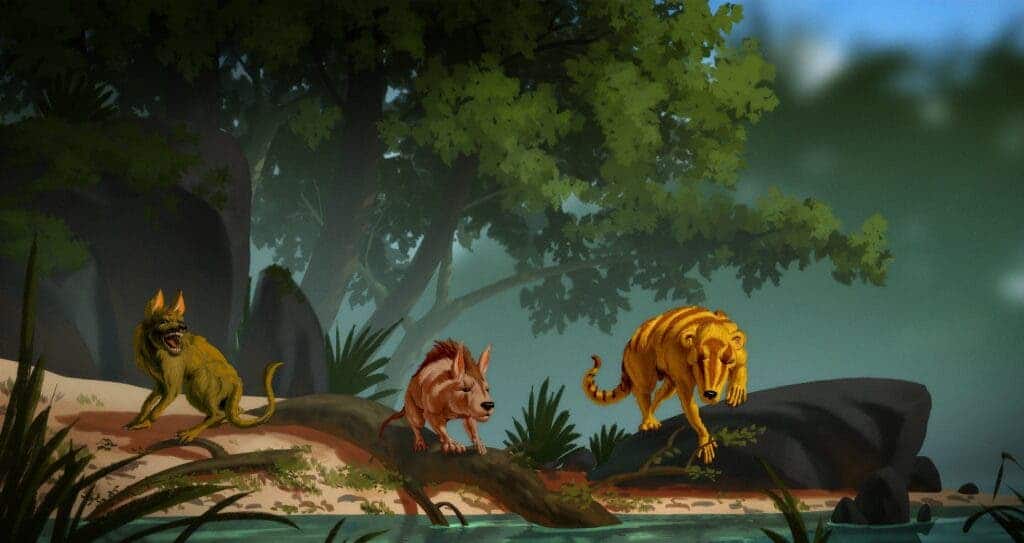The epic adventures of Bilbo Baggins act as a prequel to J.R.R. Tolkien’s Lord of The Rings trilogy. Bilbo encounters many creatures and races, including an enormous, shape-shifting warrior named Beorn.
“He is very strong, and he is a skin-changer,” the wizard Gandalf says of him, noting that “Sometimes he is a huge black bear, sometimes he is a great strong black-haired man with huge arms and a great beard.”
Researchers have now immortalized Beorn with the discovery of an extinct mammal that rose to prominence 65 million years ago, shortly after the demise of the dinosaurs. They call this creature Beornus honeyi.

The creature is part of a group of three newly discovered species: Miniconus jeanninae, Conacodon hettingeri, and Beornus honeyi. They differ in size, with the Beorn-named creature being about as big as a cat — much larger than the mostly mouse-to-rat-sized mammals that inhabited North America after the fall of the dinosaurs.
So although the creature wasn’t necessarily large by today’s standards, it was relatively big for its day. In fact, the difference between the three creatures is so significant that the researchers now believe mammal evolution after the dinosaurs occurred much quicker than previously expected.
All three creatures are part of the group of mammals called archaic ungulates (or condylarths) — ancestors of today’s hoofed mammals (horses, elephants, cows, hippos, etc.). Specifically, they belong to a family called Periptychidae, which is known for its teeth.
This family of animals has swollen premolars and unusual vertical enamel ridges on their teeth, which may be linked to an omnivorous diet (but also don’t rule out a herbivore diet). Due to these teeth, researchers also believe that the creatures had puffy cheeks — hence the Hobbit name: when Beorn transformed into a bear, he had similarly puffed cheeks.
Beornus was probably just one of the many mammals that filled in the environmental niches left open by the dinosaurs.
“When the dinosaurs went extinct, access to different foods and environments enabled mammals to flourish and diversify rapidly in their tooth anatomy and evolve larger body size,” says lead author Madelaine Atteberry from the University of Colorado Geological Sciences Department. “They clearly took advantage of this opportunity, as we can see from the radiation of new mammal species that took place in a relatively short amount of time following the mass extinction.”
Previous studies suggested that condylarths and their relatives were diversifying slowly. However, some recent studies, including this one, suggest more diversity than previously expected. The team used phylogenetic techniques to analyze fossil findings, including the teeth and lower jawbones, from 29 fossil condylarth species in the Great Divide Basin in Wyoming.
Although these analyzed species represent a relatively small part of the entire fauna discovered at the site, it seems unlikely for this to be a coincidence; instead, it’s more likely that the fauna in the area diversified quicker than expected.
“Previous studies suggest that in the first few hundred thousand years after the dinosaur extinction (what is known in North America as the early Puercan) there was relatively low mammal species diversity across the Western Interior of North America, but the discovery of three new species in the Great Divide Basin suggests rapid diversification following the extinction,” says Atteberry. “These new periptychid ‘condylarths’ make up just a small percentage of the more than 420 mammalian fossils uncovered at this site. We haven’t yet fully captured the extent of mammalian diversity in the earliest Paleocene, and predict that several more new species will be described.”
The study “New earliest Paleocene (Puercan) periptychid ‘condylarths’ from the Great Divide Basin, Wyoming, USA” was published in the Journal of Systematic Palaeontology.









